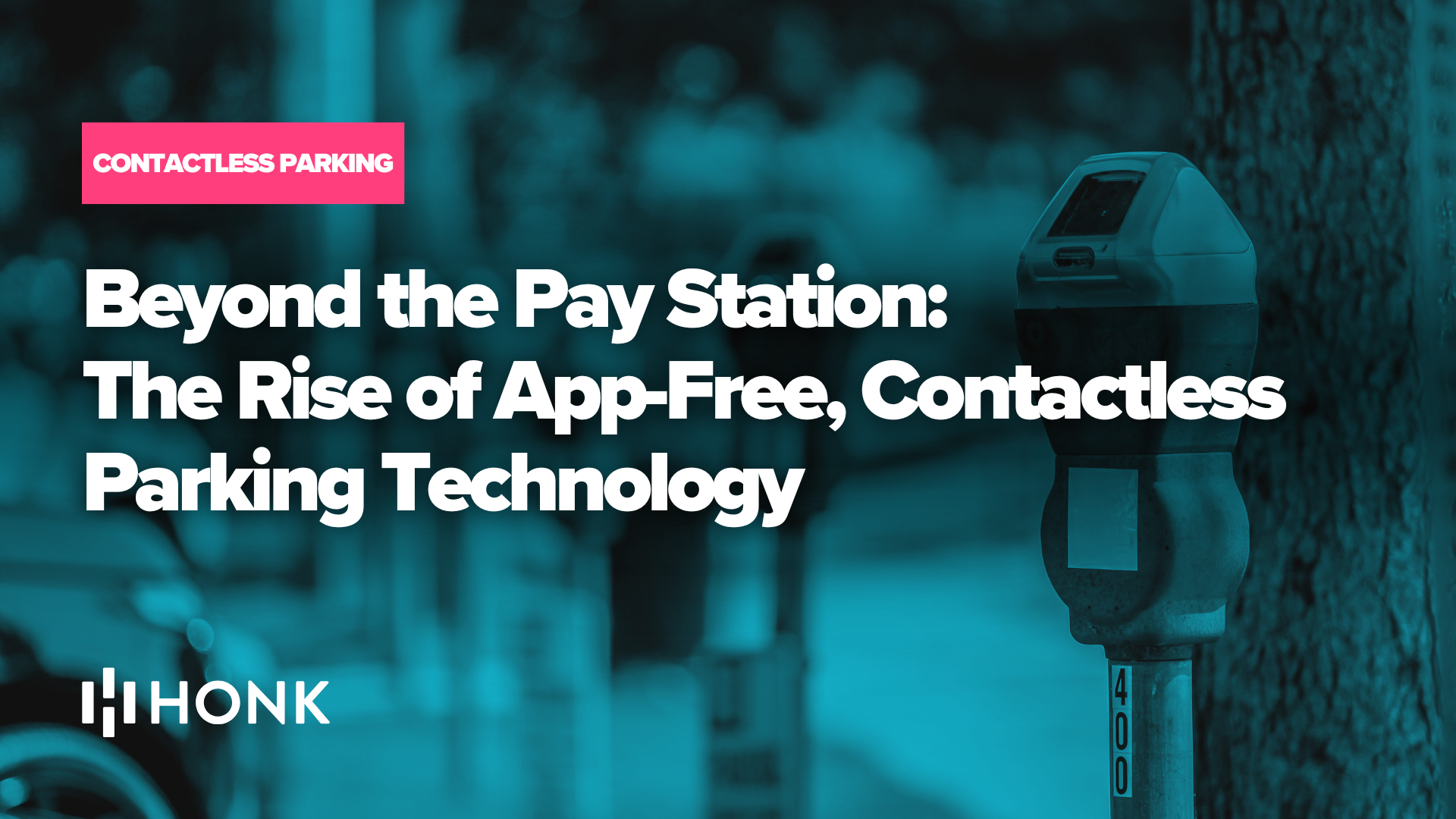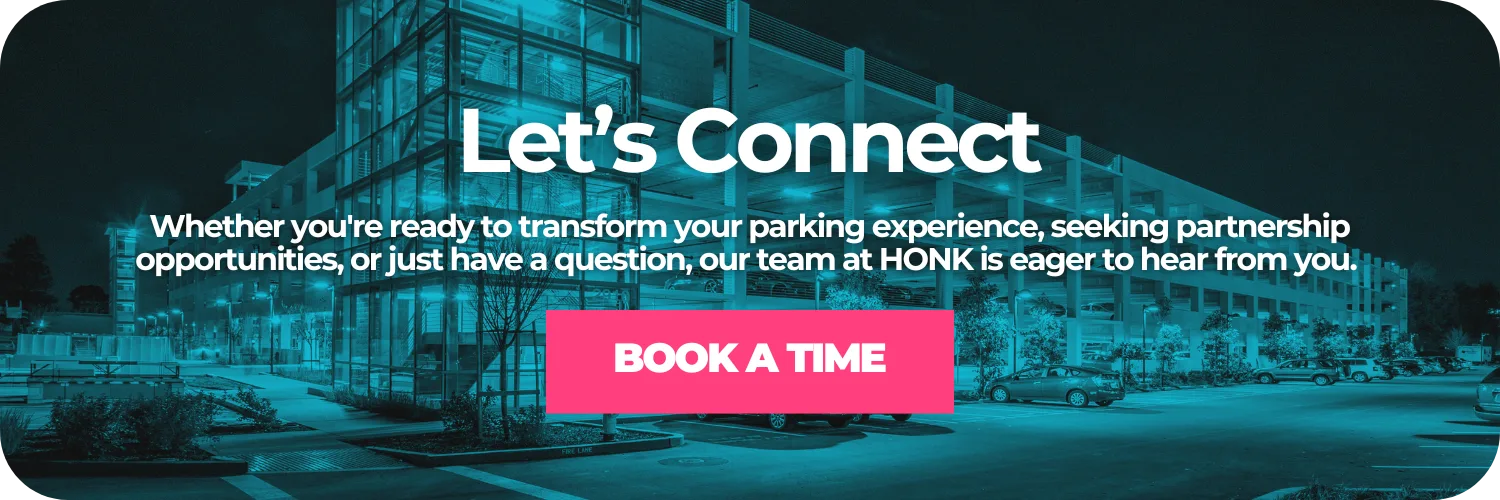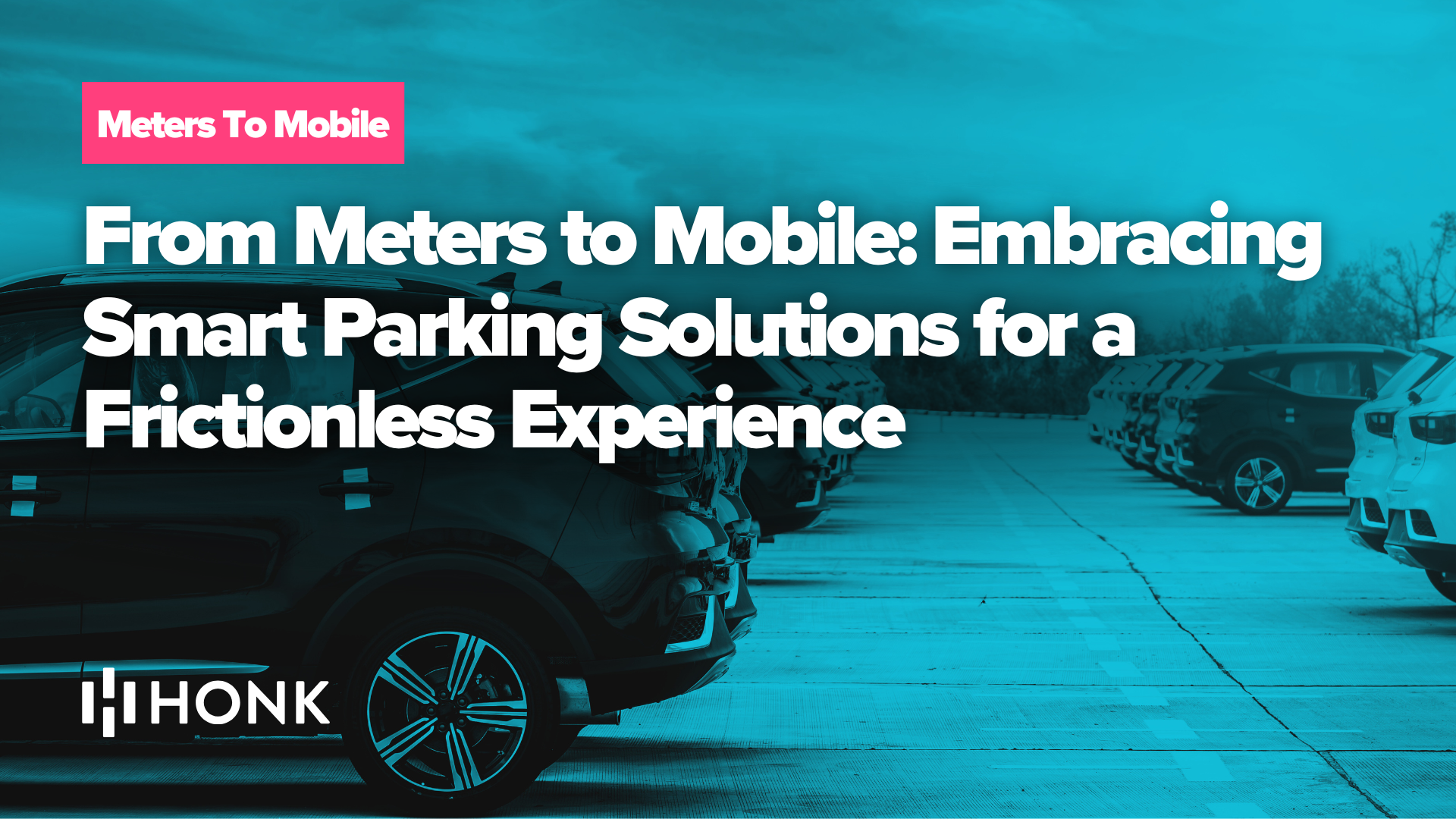Forward-thinking parking operators are embracing app-free, contactless technology to transform their operations. This digital shift isn’t just about driver convenience – it’s reshaping how parking businesses operate, boosting efficiency and profitability. Operators who modernize their payment systems have seen a 15–20% increase in daily transactions after going digital, and the global smart parking market is projected to grow from $8.5 billion in 2023 to $48.3 billion by 2033.
Parking’s future lies in mobile-first, contactless payments, cloud-based management, real-time data analytics, and license plate recognition for truly frictionless experiences. From city garages and university campuses to retail centers, hospitals, and hotels, every corner of the parking sector is being transformed by this digital revolution.
The Digital Transformation of Parking Operations
For decades, parking management relied on physical infrastructure: coin meters, paper tickets, cash boxes, and pay-and-display stations. Maintaining this bulky hardware isn’t just old-fashioned – it’s costly and labor-intensive. From refilling ticket rolls and collecting cash to repairing broken machines, traditional pay stations consume resources that modern operations can hardly spare.
Digital transformation flips this script. Software-driven systems leverage cloud computing, IoT sensors, and smart algorithms to manage parking without cumbersome equipment. The advantages are dramatic: operators reduce their physical footprint and maintenance costs, scale up easily without installing new machines, and integrate with other digital services for seamless operations.
Many parking operators are now investing more in mobile apps and cloud platforms than in pay stations or gates – a clear sign that software-based parking systems are redefining what “parking equipment” means.
Beyond Meters and Kiosks: Why App-Free, Contactless Parking?
At the heart of this evolution is app-free, contactless parking technology. Digital parking solutions often required users to download mobile apps. Apps are still important, but operators have learned that requiring an app can be a barrier for many drivers – especially infrequent visitors or tourists who may not want to install another app for one-time use.
The new wave of parking solutions goes beyond the app, enabling quick, contactless payment with no download required. These systems typically work via QR codes or simple text-to-pay systems. A driver rolls up to a parking lot, scans a QR code with their smartphone camera, instantly launching a mobile payment site.
The entire transaction happens on the driver’s personal device, with no physical interaction with a meter and no requirement to download an app. This approach has made parking payments faster and more frictionless than ever. Drivers can complete a parking payment in under 15 seconds – compare that to the minute or more it might take to feed a meter or kiosk.
For parking operators, embracing contactless, app-free payments means casting a wider net of potential customers. Around 80% of drivers prefer digital payment options for parking when available. A Visa study found 74% of consumers prefer contactless payments because they’re quicker and more convenient. Parking is no exception – drivers overwhelmingly appreciate not having to fiddle with cash or kiosks when a smoother alternative exists.
The COVID-19 Push and Lasting Impact
The push towards contactless parking received an extra boost during the COVID-19 pandemic. What was once seen as a nice convenience became a public health imperative. Nearly 46% of consumers said contactless payments were among the most important safety measures businesses could offer during the pandemic. Municipalities responded by fast-tracking contactless parking options to reduce touchpoints.
The pandemic eventually ebbed, but consumer habits shifted permanently. Today, many parkers expect a touchless parking experience by default. Scanning a code or using Apple Pay/Google Pay feels not only easier but also cleaner and safer. What started as a health-driven trend has become the new baseline for convenience and efficiency in parking operations.
Benefits of App-Free, Contactless Parking for Operators
Speed, Convenience, and Increased Turnover
When drivers can enter, pay, and exit a facility faster, everyone wins. Digital payments dramatically accelerate transaction times. One study found that contactless and mobile payment systems can make parking transactions up to 10 times faster than traditional methods. Denver International Airport recently stopped accepting cash at its parking lots specifically to speed up exit times – a move that improved traffic flow across all parking locations.
The math is simple: cut payment time, increase turnover. This speed not only boosts efficiency but also enhances customer satisfaction. When drivers aren’t stuck at pay stations or gate arms, you avoid backups and keep entry/exits smooth. The end result is a parking lot that can serve more customers per hour with less hassle.
Higher Compliance and Revenue Uplift
By removing barriers to payment, more drivers are willing and able to pay. Many modern systems allow guest checkout (one-time payments with no account creation), dramatically lowering the barrier for casual parkers.
When the Village of Port Jefferson, NY implemented a city-wide contactless payment system with app-free options, they removed 50% of their pay-and-display machines while seeing mobile payment adoption jump from 3% to 45% of total transactions in just 6 months.
Studies show that when you make paying easier, people are far less likely to evade payment or park illegally. Mobile payments also often let drivers extend their time remotely, which means they’re less likely to overstay unpaid.
Industry data indicates that going digital and contactless can raise total parking revenue by on-boarding customers who previously might not have bothered to pay. Some operators have seen a 15–20% increase in transactions after switching to modern payment platforms.
Reduced Costs and Operational Efficiency
Digital parking solutions don’t just increase revenue – they also decrease costs, delivering a double boost to the bottom line. By moving to a mostly hardware-free model, operators can save significantly on capital expenditures and ongoing maintenance.
One municipal case study found that by retrofitting old meters with QR code stations, they could permanently remove half of the machines and eliminate monthly costs on paper, communications, maintenance, and insurance.
Cash handling costs vanish when you go fully digital. Research has shown that handling physical cash can cost businesses around 9% of the cash collected. For parking operators, the act of emptying meters, counting money, and transporting it securely is an entire operation of its own.
Labor costs can drop significantly – fewer staff hours are needed for collection and machine maintenance, allowing reallocation of employees to higher-value tasks. Some operators have reported cutting on-site staffing costs by 20–30% thanks to payment automation.
Operationally, a cloud-managed, contactless system is far more agile. Want to change your pricing or implement a special rate for an event? Instead of reprogramming dozens of individual meters, you can update the rate in your cloud dashboard with a few clicks.
Real-Time Data and Automated Reporting
Perhaps one of the most transformative benefits is the wealth of data that becomes available. Every mobile payment generates a data point that can be analyzed: when it occurred, how long the stay was, which locations are busiest, etc.
Modern parking management software provides real-time analytics dashboards that display occupancy, revenue, and usage patterns as they happen. At any moment, you can see how many cars are parked in each lot, revenue by location, and heatmaps of peak usage times.
Armed with these insights, parking operators can practice data-driven decision-making. If analytics show that weekday mornings are slow but afternoons are packed, you might adjust pricing accordingly. Some advanced operators apply dynamic pricing – raising or lowering rates based on real-time demand.
Operators who leverage real-time data for dynamic management have increased revenue by up to 20% by optimizing pricing and space usage. Automated reporting means managers get accurate reports on revenue per day, per lot, per space with the click of a button, making budgeting and forecasting far more accurate.
Transforming the Parking Experience Across Sectors
Municipal Parking
Cities have much to gain by going beyond the pay station. Many are implementing solutions that let drivers pay by app or text, eliminating the need for thousands of street meters. This saves money on meter maintenance and improves compliance – drivers are less likely to risk a ticket when paying is easy.
Cities like Port Jefferson converted old meters to contactless stations and saw immediate benefits in both cost savings and revenue. By adopting a unified platform, a city can manage all locations through one dashboard, adjust pricing for different zones, and integrate with citation management systems for enforcement.
Colleges & Universities
Campus parking has long been a source of frustration. Universities are moving to digital management to better serve their communities. Students and faculty can purchase permits or hourly parking through their phones, skipping the trek to a parking office.
Digital permits mean no more physical hangtags; enforcement can be done via license plate checks. QR code signs around campus let visitors quickly pay and get on with their visit. For events or games, universities can implement pre-booked parking, smoothing out what used to be chaotic traffic.
Retail and Shopping Centers
For retail, customer experience is king. Contactless parking ensures the parking process is as welcoming as the stores themselves. Shoppers can quickly start a parking session on their phone and receive a reminder text when time is nearly up with the option to extend.
Some retail operators set up digital validation programs with merchants – a store can provide a validation code on a receipt that the shopper enters into the app or website, automatically applying a discount or free parking period. Mall operators get data on peak visit times and can adjust time limits to increase turnover in high-demand areas.
Hospitality and Hospitals
Hotels, airports, and hospitals each have unique parking needs but all benefit from contactless systems. Hotels can allow guests to register their vehicle as part of mobile check-in. Airports implement mobile payments and LPR to speed up entry/exit for travelers.
Hospitals increasingly use app-free payment for visitor parking, knowing that for stressed patients and visitors, not having to deal with a pay machine is one less worry. Moreover, hospitals can offer digital validation codes to patients, eliminating paper passes.
What’s common across all these examples is the flexibility of the technology. A robust platform can be configured to fit any parking environment without needing separate systems for each use case. This versatility is crucial not only for current operations but also for future growth.
Embracing a Future Beyond the Pay Station
The rise of app-free, contactless parking technology represents more than just a tech upgrade – it’s a fundamental shift in how parking operations are run and experienced. By moving beyond the traditional pay station, parking operators are unlocking new levels of efficiency and service.
The payoff comes in many forms: lower costs, higher revenues, richer data insights, and happier customers. Drivers today navigate their lives through smartphones and expect convenience at every turn. Parking is no longer an exception. A frictionless parking experience creates goodwill and loyalty. Operators that deliver on this convenience will stand out in a competitive market.
As we look to the future, technologies like mobile payments, LPR, and cloud analytics will continue to evolve and intertwine, further enhancing what’s possible – from guiding drivers to open spots via real-time apps to using AI for predictive parking demand.
One thing is certain: the days of coin meters and pay stations are fading. The rise of app-free, contactless parking technology is here, and it’s steering the parking industry into a new era of efficiency and innovation. For parking lot operators and owners, now is the time to embrace this digital transformation and drive forward – beyond the pay station, and into a smarter parking future.





